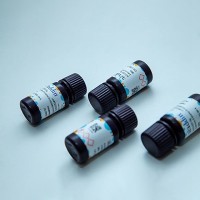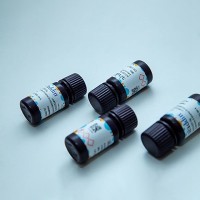Enzymatic Glycosylation of Aglycones of Pharmacological Significance
互联网
551
There are numerous reports on the production of useful compounds by using biochemical reactions catalyzed by enzymes from microorganisms, plants, and animal organs. One of these areas of research is the biological and enzymatic transformation of useful compounds with stereospecific and regioselective modifications of chemical structures that are very difficult in synthetic organic chemistry. In plants most of the compounds that are unstable, toxic, and hydrophobic or volatile occur in glycosylated forms. These glycosylated compounds have excellent properties, such as a high stability, nontoxicity, and water-solubility. It follows that glycosylation is an excellent biotransformation method for preparing pharmacologically significant compounds with high stability, nontoxic, and water-solubility. We have worked on the enzymatic glycosylation of physiologically active compounds, such as vitamins (B1 , B2 , B6 , C), nucleosides (adenosine, inosine, uridine, arabinosylcytosine), sugars, sugar alcohols, flavonoids (rutin, hesperidin, naringin, naringin dihydrochalcone), aromatic, monoterpene, and indole alcohols, phenolic compounds, antioxidants, saponins, antibiotics, and so on by using glycosyltransferases (cyclomaltodextrin gelucan-otransferase [CGTase] and dextransucrase) and various glycosidases from microorganisms and plants. The above glycosylated compounds have advantages over the original compounds (or aglycones) in their solubility in water, stability against ultraviolet light, heating, and air oxidation, reduction of a bitter taste and a stimulative tongue-pricking taste, and resistance to enzymatic action (1 –3 ).









